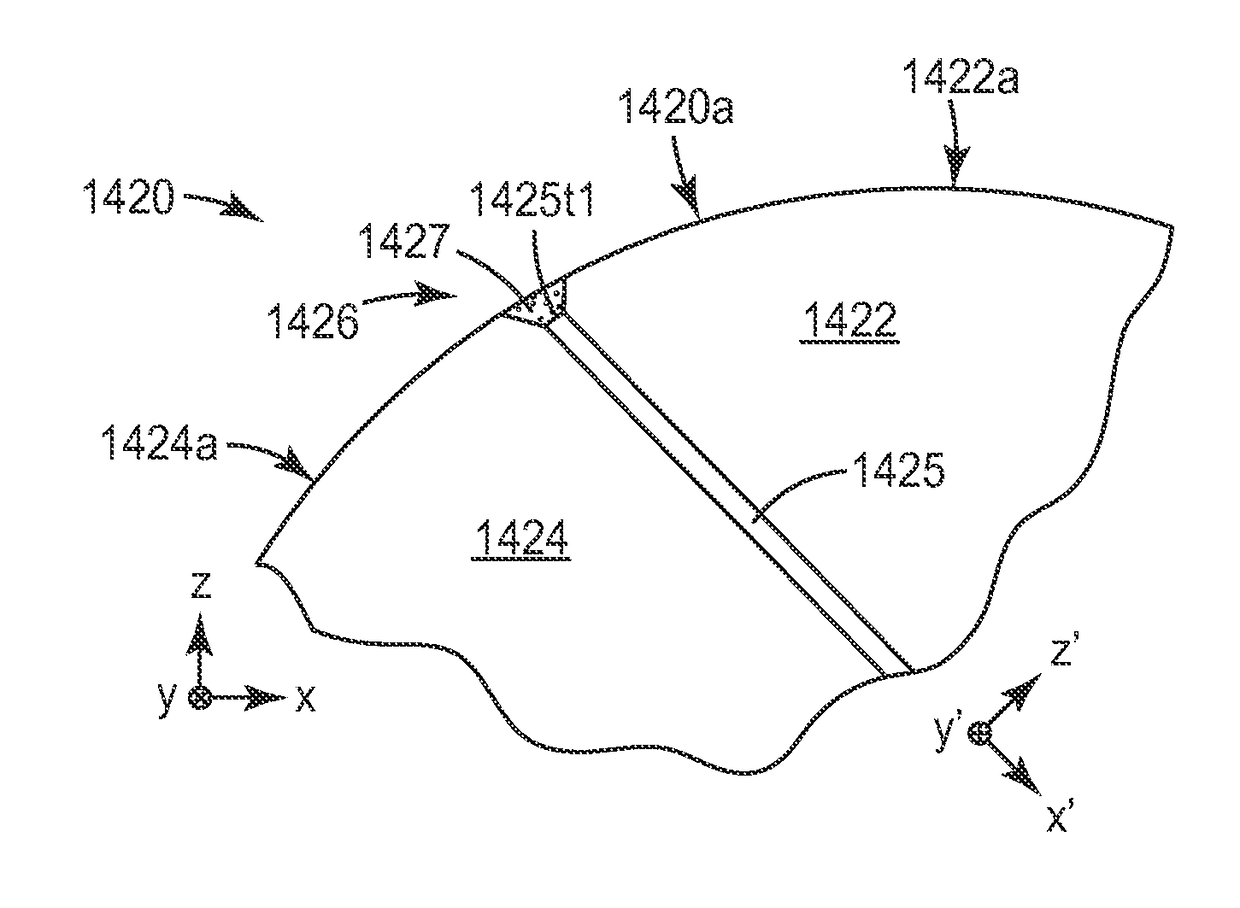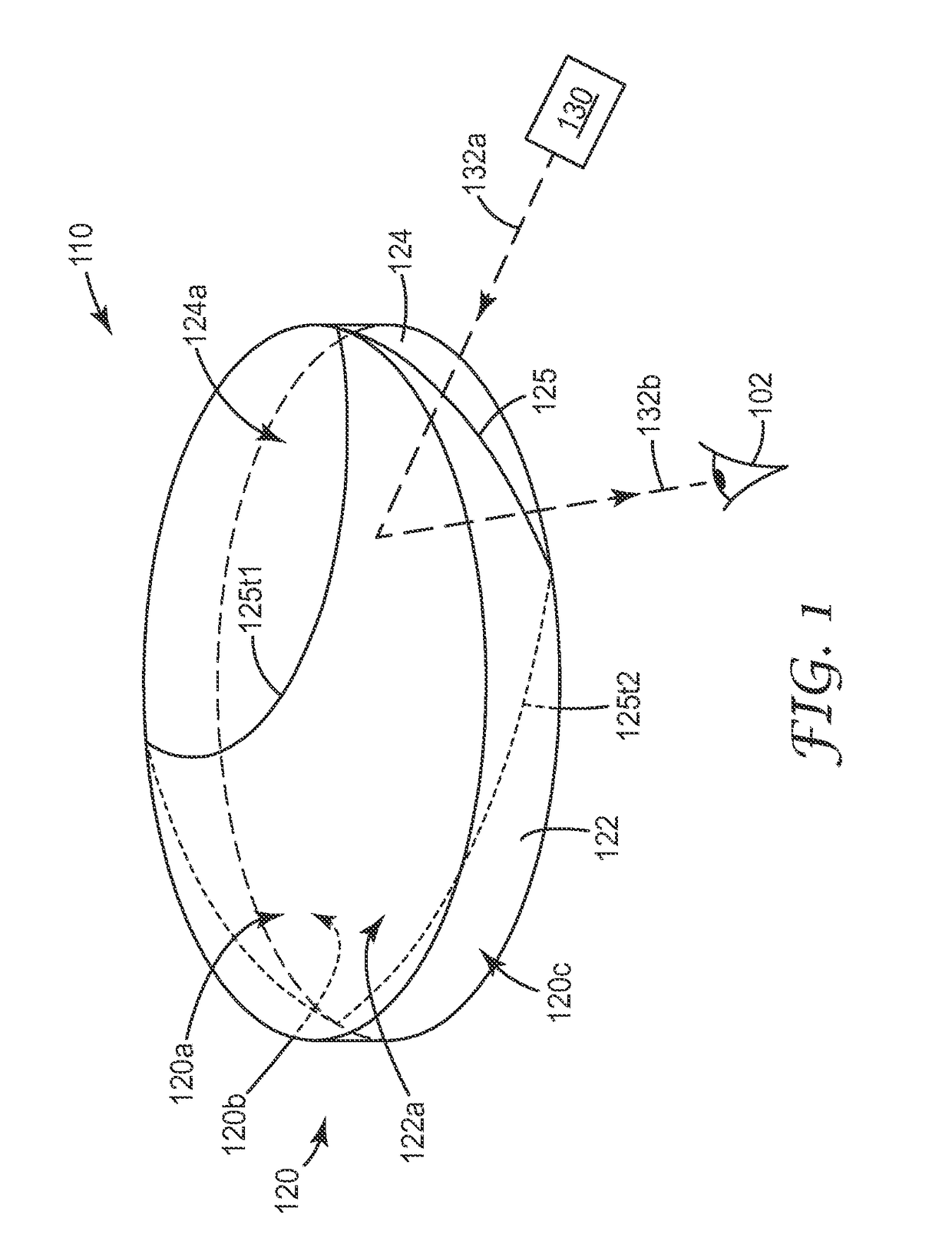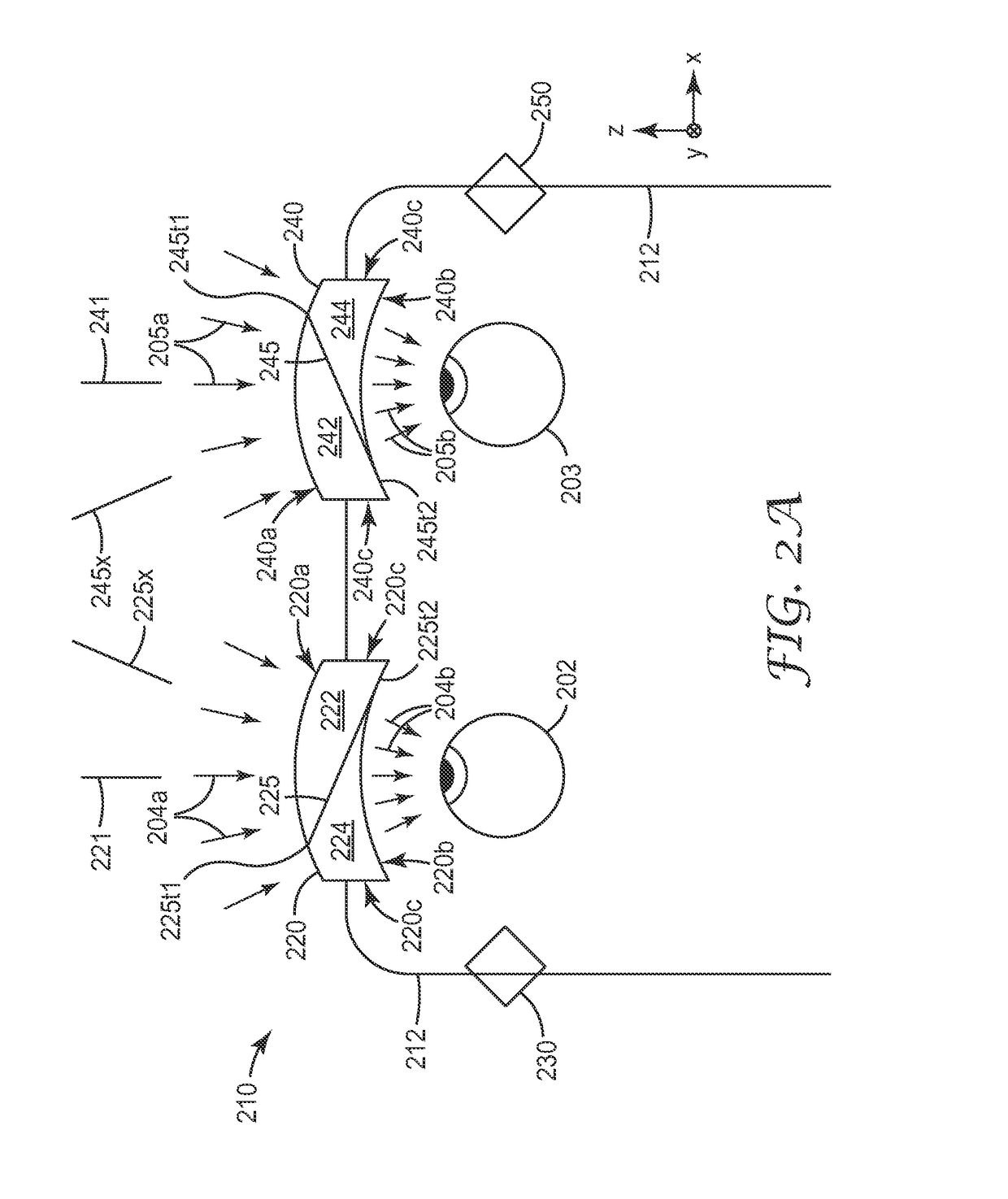Lens with embedded multilayer optical film for near-eye display systems
a multi-layer optical film and display system technology, applied in the field of lenses, can solve the problems of significantly reducing the optical performance of the lens, birefringent polymer layers tend to be more brittle, etc., and achieve the effect of high quality optical performance, minimal artifacts, and robustness
- Summary
- Abstract
- Description
- Claims
- Application Information
AI Technical Summary
Benefits of technology
Problems solved by technology
Method used
Image
Examples
Embodiment Construction
[0035]As mentioned above, we have developed lenses in which the lens is formed from at least two sections or bodies that are shaped to mate with each other, and a multilayer optical film is sandwiched between these two sections. The multilayer optical film is partially transmissive and partially reflective in order to give the lens a beamsplitting capability. The partial transmission and reflection may be primarily a function of polarization state of normally incident light (as with a broadband reflective polarizer), or may be primarily a function of optical wavelength (as with a notched filter), or may be a combination of these, and / or in combination with other characteristics. The multilayer optical film is oriented within the lens such that an edge or terminus of the film intersects an optical surface of the lens. The terminus separates smooth surfaces of each of the two lens sections, such smooth surfaces in combination providing an optical surface of the lens. Any edge defects ...
PUM
| Property | Measurement | Unit |
|---|---|---|
| average defect distance | aaaaa | aaaaa |
| average defect distance | aaaaa | aaaaa |
| defect distance | aaaaa | aaaaa |
Abstract
Description
Claims
Application Information
 Login to View More
Login to View More - R&D
- Intellectual Property
- Life Sciences
- Materials
- Tech Scout
- Unparalleled Data Quality
- Higher Quality Content
- 60% Fewer Hallucinations
Browse by: Latest US Patents, China's latest patents, Technical Efficacy Thesaurus, Application Domain, Technology Topic, Popular Technical Reports.
© 2025 PatSnap. All rights reserved.Legal|Privacy policy|Modern Slavery Act Transparency Statement|Sitemap|About US| Contact US: help@patsnap.com



